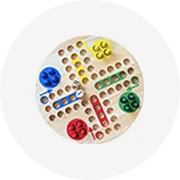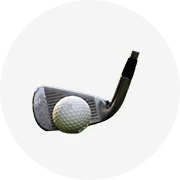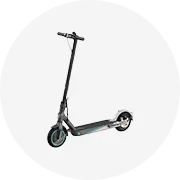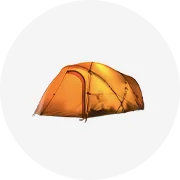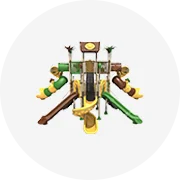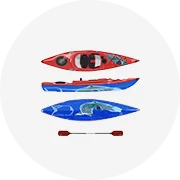Types of Inflatable Floating Walkway
An inflatable floating walkway is a versatile water access solution designed to provide safe passage over water surfaces. These buoyant pathways come in various configurations to suit different applications and environments. Here are the main types available:
Modular Floating Walkways
These highly adaptable systems feature individual floating units connected through interlocking mechanisms. They can be extended or contracted to accommodate various water environments.
Best for: Adaptable water access, changing water levels, versatile configurations
Event-based Inflatable Walkways
Specifically designed for temporary occasions, these walkways prioritize visual appeal while providing functional access. Lightweight construction facilitates easy transport and setup.
Best for: Temporary installations, water-based events, branded experiences
Marina Walkways
Built with durable, corrosion-resistant materials, these specialized walkways provide boat access and docking facilities in marina environments. Safety features like handrails and anti-slip surfaces are standard.
Best for: Boat access, commercial marinas, high-traffic water access
Residential Floating Walkways
Designed for private waterfront properties, these walkways emphasize aesthetics and functionality. They provide access to private docks, boat lifts, and waterfront amenities.
Best for: Private waterfront properties, personalized design, seamless landscape integration
Expert Tip: When selecting a floating walkway type, consider not only your immediate needs but also seasonal changes in water levels and potential future expansions. Modular systems offer the greatest flexibility for changing conditions.
| Walkway Type | Primary Applications | Key Features | Durability |
|---|---|---|---|
| Modular Floating Walkways | Marinas, waterfront promenades, temporary installations | Interlocking system, expandable design, adaptable to water levels | High |
| Event-based Inflatable Walkways | Water festivals, corporate events, promotional activities | Lightweight, customizable branding, quick deployment | Medium |
| Marina Walkways | Commercial marinas, boat docking facilities | Corrosion-resistant, safety features, multiple configuration options | Very High |
| Residential Floating Walkways | Private lakefront properties, home docks | Aesthetic design, personalization options, integration with landscaping | High |
Specifications and Maintenance
Understanding the technical specifications and maintenance requirements of inflatable floating walkways is essential for ensuring their performance, longevity, and safety in various applications.
Key Specifications
| Specification | Description | Importance |
|---|---|---|
| Load Capacity | Measured in pounds or kilograms per square foot/meter, indicating how much weight the walkway can safely support | Critical for safety and performance |
| Size Dimensions | Length, width, and height specifications that determine the walkway's footprint and accessibility | Essential for fitting the intended space |
| Material Composition | Typically PVC, Hypalon, or reinforced polymers with UV and puncture resistance properties | Determines durability and environmental resistance |
| Anchoring System | Methods for securing the walkway in position, including anchor points, chains, and connection hardware | Critical for stability in varying conditions |
| Safety Features | Elements like handrails, non-slip surfaces, reflective markers, and emergency inflation chambers | Essential for user protection and regulatory compliance |
Safety Warning: Never exceed the specified load capacity of your inflatable floating walkway. Overloading can cause instability, structural failure, and potentially dangerous situations for users. Always maintain a safety margin below maximum capacity.
Essential Maintenance Practices
Proper maintenance significantly extends the lifespan and ensures the safety of inflatable floating walkways. Implement these practices regularly:
Regular Inspection
Conduct thorough visual inspections of seams, connection points, and the entire surface for signs of wear, punctures, or material degradation. Check for air leaks by fully inflating and listening for escaping air.
Frequency: Before each use and monthly for permanent installations
Proper Cleaning
Clean with mild soap and fresh water to remove dirt, algae, oil, and salt deposits. Avoid harsh chemicals that can damage the material. Ensure complete drying before storage to prevent mold and mildew.
Frequency: After each use for temporary installations; weekly for permanent ones
Anchoring System Check
Inspect all anchoring components for corrosion, wear, and proper function. Verify that anchor points on the walkway remain secure and undamaged. Tighten all connections and replace damaged hardware.
Frequency: Monthly and after severe weather events
Air Pressure Monitoring
Verify proper inflation according to manufacturer specifications. Under-inflation can cause excessive wear and instability, while over-inflation can damage seams and materials. Adjust as needed for temperature changes.
Frequency: Weekly and during significant temperature fluctuations
Maintenance Tip: Create a maintenance log to track inspection dates, findings, repairs made, and scheduled maintenance activities. This documentation helps identify patterns of wear and can be valuable for warranty claims if needed.
How to Choose an Inflatable Floating Walkway
Selecting the right inflatable floating walkway requires careful consideration of several factors to ensure it meets your specific needs, safety requirements, and environmental conditions.
| Selection Factor | Considerations | Importance |
|---|---|---|
| Weight Capacity | Must accommodate all intended users, equipment, and furniture with a safety margin of at least 20% | Critical |
| Size Dimensions | Appropriate length and width for intended location and user traffic; sufficient width for comfortable passage | High |
| Material Durability | Multi-layered construction with puncture-resistant materials; UV protection for outdoor use; double/triple air chambers for redundancy | Critical |
| Safety Features | Handrails, non-slip surfaces, reflective elements for visibility, emergency flotation backups | Critical |
| Connection Method | Secure anchoring system compatible with installation location; adjustable connections for water level changes | High |
| Portability | Weight when deflated, storage footprint, included carrying solutions, ease of inflation/deflation | Medium to High |
| Customization Options | Available colors, branding possibilities, additional accessories, modular expansion capabilities | Low to Medium |
Selection Tip: For locations with varying water levels (tidal areas, reservoirs, seasonal water bodies), prioritize walkways with flexible anchoring systems and modular designs that can adapt to changing conditions throughout the year.
Commercial Use Considerations
For commercial applications, prioritize higher load capacities, commercial-grade materials, and compliance with public access regulations. Look for walkways with documented testing, professional installation options, and warranty coverage.
Residential Use Considerations
For home use, focus on ease of handling, aesthetic integration with your property, and appropriate sizing for family needs. Consider storage requirements during off-seasons and compatibility with existing docks or water features.
Important Note: Always check local regulations and permit requirements before installing a floating walkway on public waters or in environmentally sensitive areas. Some jurisdictions require specific permissions, environmental impact assessments, or adherence to particular standards.
DIY Repair and Replacement Guide
When your inflatable floating walkway develops punctures or leaks, this step-by-step DIY repair guide will help you restore its functionality and extend its service life.
Step-by-Step Repair Process
-
Identify the Damage
Fully inflate the walkway and inspect for visible punctures or tears. For hidden leaks, apply soapy water and look for bubbles forming at leak points. Mark all damaged areas with a waterproof marker.
-
Deflate and Clean
Completely deflate the walkway. Clean the damaged area thoroughly with mild soap and water to remove dirt, algae, and oils. Rinse with fresh water and allow to dry completely before proceeding.
-
Prepare Your Repair Kit
Select the appropriate repair kit for your walkway material (PVC or Hypalon/EPDM). Verify all components are present: patch material, adhesive, applicator, and cleaning solvent.
-
Cut the Patch
Cut a patch from the repair material that extends at least 1 inch beyond all edges of the damage. Round the corners of the patch to prevent lifting and peeling after application.
-
Apply Adhesive
Apply a thin, even layer of the appropriate adhesive to both the patch and the area surrounding the damage on the walkway. Allow to become tacky (usually 3-5 minutes) before proceeding.
-
Attach the Patch
Position the patch carefully over the damaged area, ensuring it's centered properly. Press firmly from the center outward to eliminate air bubbles and ensure complete contact across the entire patch.
-
Seal the Edges
Apply a thin bead of adhesive around the entire perimeter of the patch and smooth it with a tool or finger to create a watertight seal. This additional step significantly improves durability.
-
Allow Proper Curing
Let the repair cure completely according to the adhesive manufacturer's instructions (typically 12-24 hours). Avoid inflating or using the walkway during this period to ensure optimal adhesion.
-
Test the Repair
Inflate the walkway to normal operating pressure and inspect the repair for any signs of leakage. Apply soapy water to verify the seal is complete. Check again after 24 hours to confirm stability.
Repair Tip: For larger tears (over 2 inches), consider applying patches to both the inside and outside of the walkway for maximum strength. This "sandwich" technique provides superior reinforcement for areas under high stress.
Preventative Maintenance
Implement these practices to reduce the need for repairs and extend your walkway's lifespan:
- Apply UV protectant spray annually to prevent material degradation from sun exposure
- Store the walkway clean and dry when not in use, away from extreme temperatures
- Use protective ground cloths under the walkway when deployed on rough surfaces
- Maintain proper inflation levels to prevent excessive stress on seams and materials
- Conduct minor repairs immediately before small issues develop into major problems
Safety Note: For extensive damage or repairs to critical structural components, consult with the manufacturer or a professional repair service. Improperly repaired walkways can pose safety risks to users.
Frequently Asked Questions
With proper care and maintenance, high-quality inflatable floating walkways typically last 3-4 years with regular use. Premium models with UV-resistant materials and reinforced construction can last up to 5-7 years. Factors affecting longevity include exposure to harsh weather conditions, frequency of use, storage practices, and maintenance routine. Regular inspection and prompt repair of minor damage significantly extends service life.
Yes, most manufacturers offer extensive customization options for inflatable floating walkways. These typically include:
- Size customization: Adjustable length, width, and configuration to suit specific locations
- Color options: Various colors to match branding or aesthetic preferences
- Logo application: Custom printing of logos, text, and graphics for branding purposes
- Accessory integration: Adding handrails, lighting, connection points, and other functional elements
- Material selection: Choices of material grade based on intended use environment
Custom orders typically require longer lead times (2-8 weeks depending on complexity) and may involve additional design and setup fees.
Yes, inflatable floating walkways can be used in saltwater environments, but with important considerations:
- Select models specifically rated for saltwater use with corrosion-resistant components
- Rinse thoroughly with fresh water after each use to remove salt residue
- Inspect metal components (anchors, connection hardware) regularly for signs of corrosion
- Apply protective coatings to metal parts as recommended by the manufacturer
- Expect potentially shorter lifespan compared to freshwater use due to harsher conditions
Premium models designed specifically for marine environments incorporate UV stabilizers, anti-fouling properties, and saltwater-resistant materials that significantly improve performance and longevity in coastal applications.
Weight capacities for inflatable floating walkways vary significantly based on design, size, and intended application. Typical capacity ranges include:
| Walkway Type | Typical Weight Capacity | Best Applications |
|---|---|---|
| Recreational/Residential | 400-800 lbs (180-360 kg) | Home use, light traffic, personal watercraft access |
| Commercial/Marina | 1,000-1,500 lbs (450-680 kg) | Public access, moderate traffic, small boat docking |
| Heavy-Duty Industrial | 2,000+ lbs (900+ kg) | Commercial operations, equipment transport, high traffic areas |
Always verify the manufacturer's specific load rating and maintain a safety margin of at least 20% below the maximum capacity for safe operation.
Installation difficulty varies based on the walkway type, size, and location. Most residential and event-based systems are designed for DIY installation and can be set up by 1-2 people in 30-60 minutes. Commercial and marina systems may require professional installation. Key installation factors include:
- Anchoring requirements and water depth
- Connection to existing docks or shorelines
- Inflation method (manual pump vs. electric inflator)
- Size and weight of the walkway components
- Environmental conditions (current, wind, waves)
Most manufacturers provide detailed installation instructions, and many offer installation services or can recommend local professionals for complex setups.


















































